Abstract
Sixteen girls (ages 4, 6, 9, and 12) performed on concurrent-chain schedules of reinforcement. The initial links were variable-interval 10-s schedules, and the terminal links offered a long delay (20, 30, 40, or 50 s) followed by two tokens or a short delay (10 s) followed by one token. Tokens were used to buy toys and sweets. The effect of increasing the delay to the large reward differed significantly across age groups. Whereas 6- and 9-year-olds maintained a strong preference for the larger, more delayed reward under all delay conditions, half of the 4-year-olds and all the 12-year-olds showed increasing preference for the small reward as the delay to the large reward increased. The results suggest a two-stage account of the development of self-control. In the first stage, behavior is increasingly controlled by reward size, as children learn how to wait for delayed rewards, and in the second phase behavior is increasingly controlled by reward rate, as children learn when it is in fact profitable to wait.
Keywords: development, adaptation, self-control, concurrent-chain schedules of reinforcement, block press, children
Full text
PDF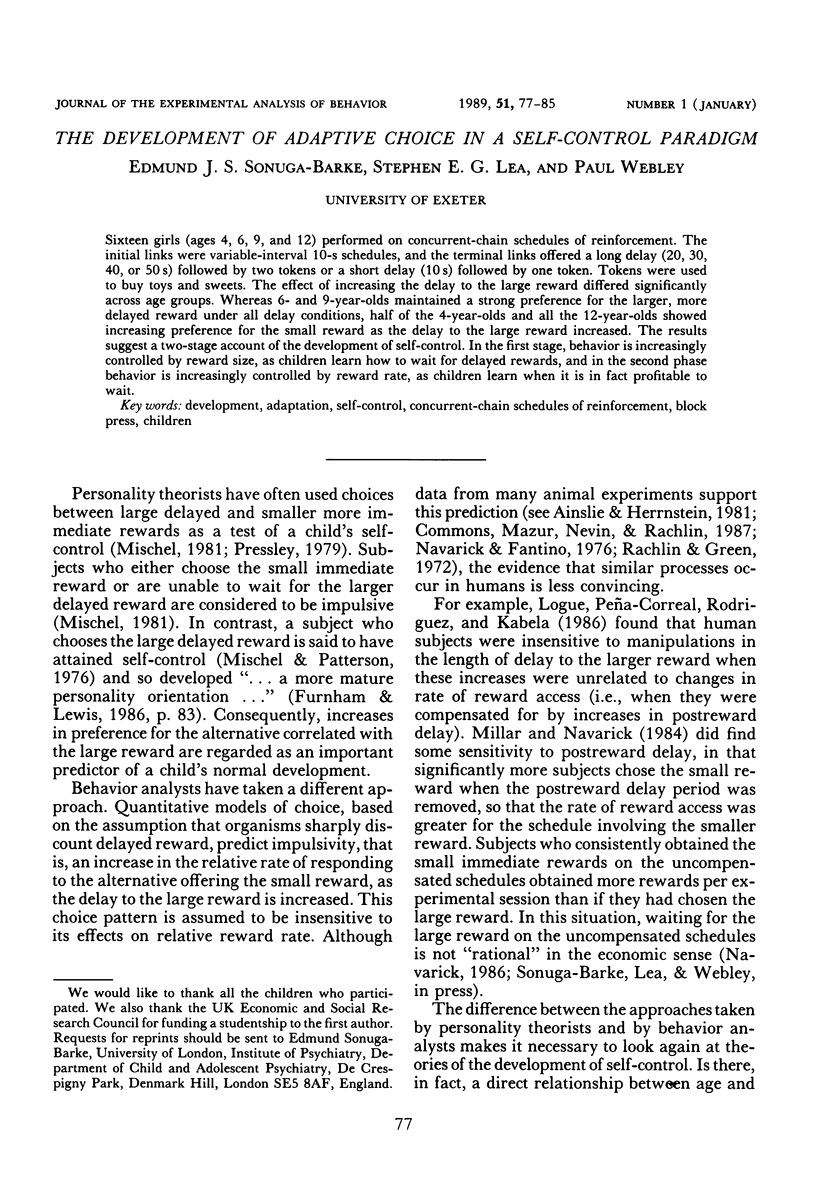
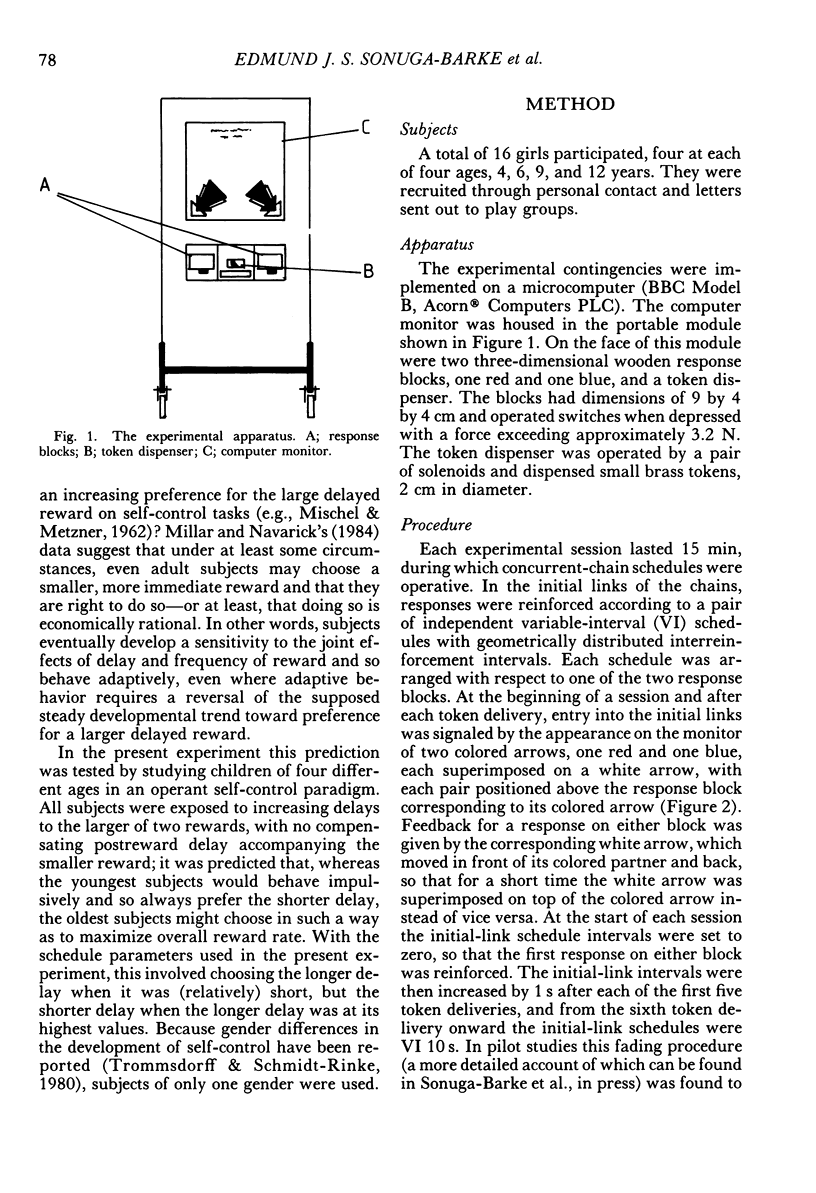
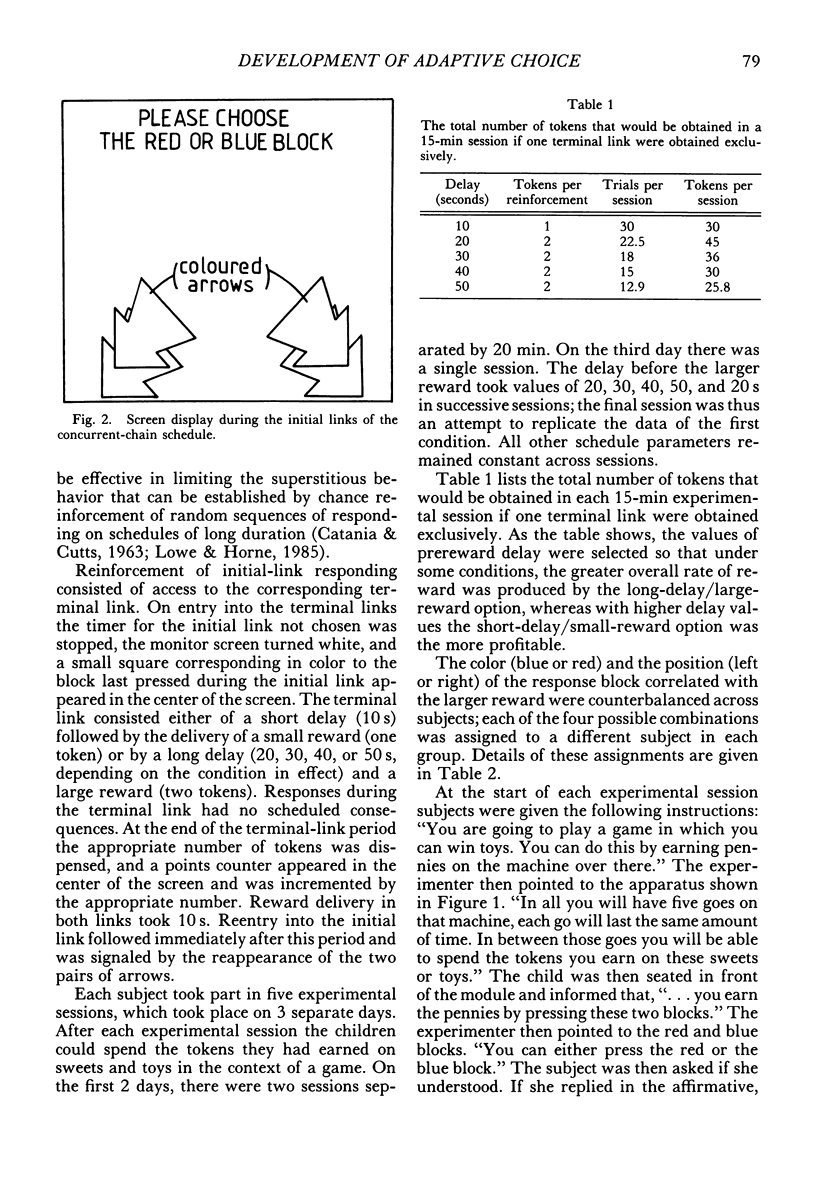
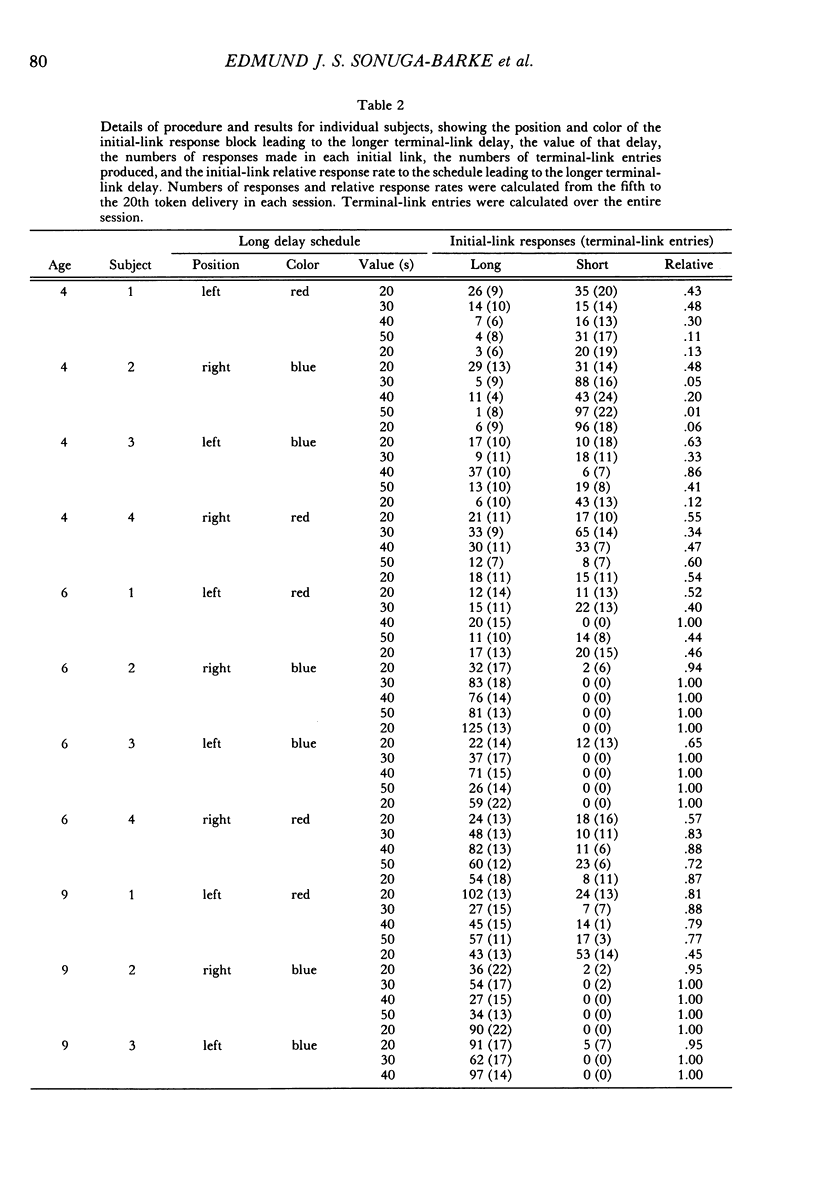
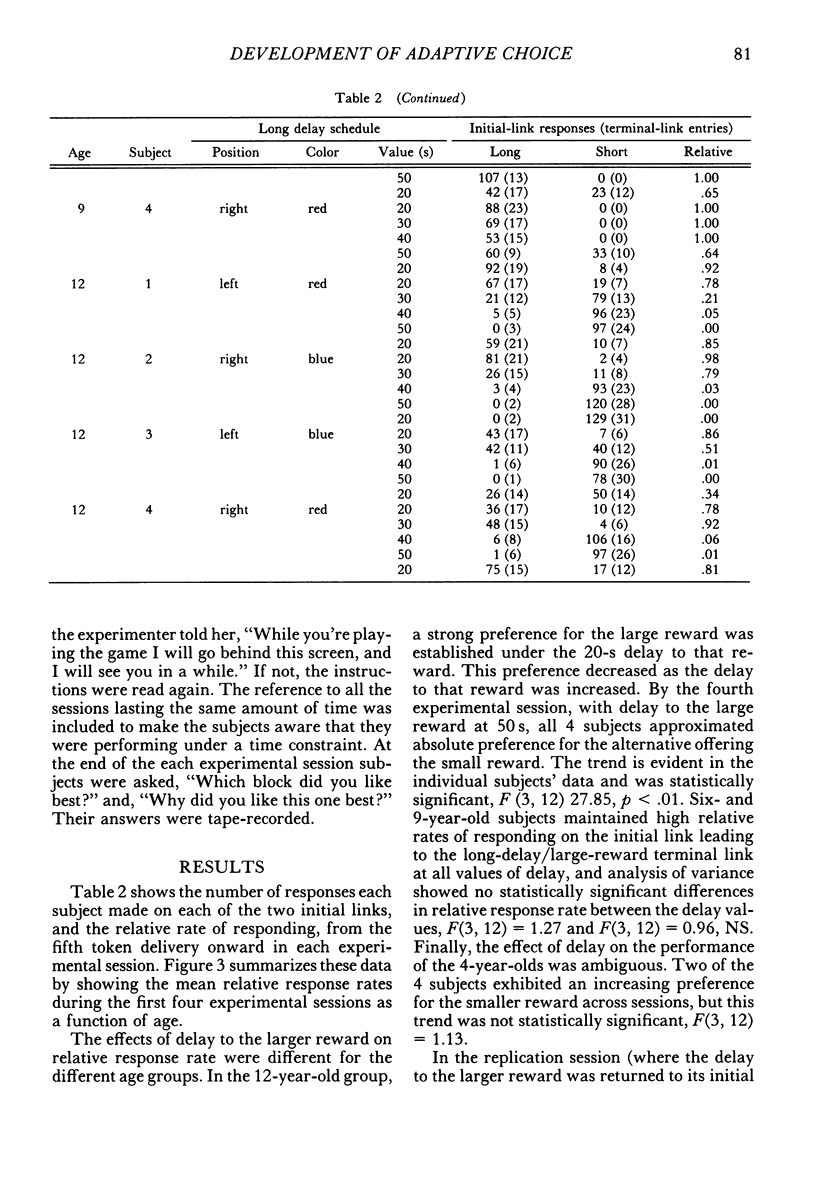
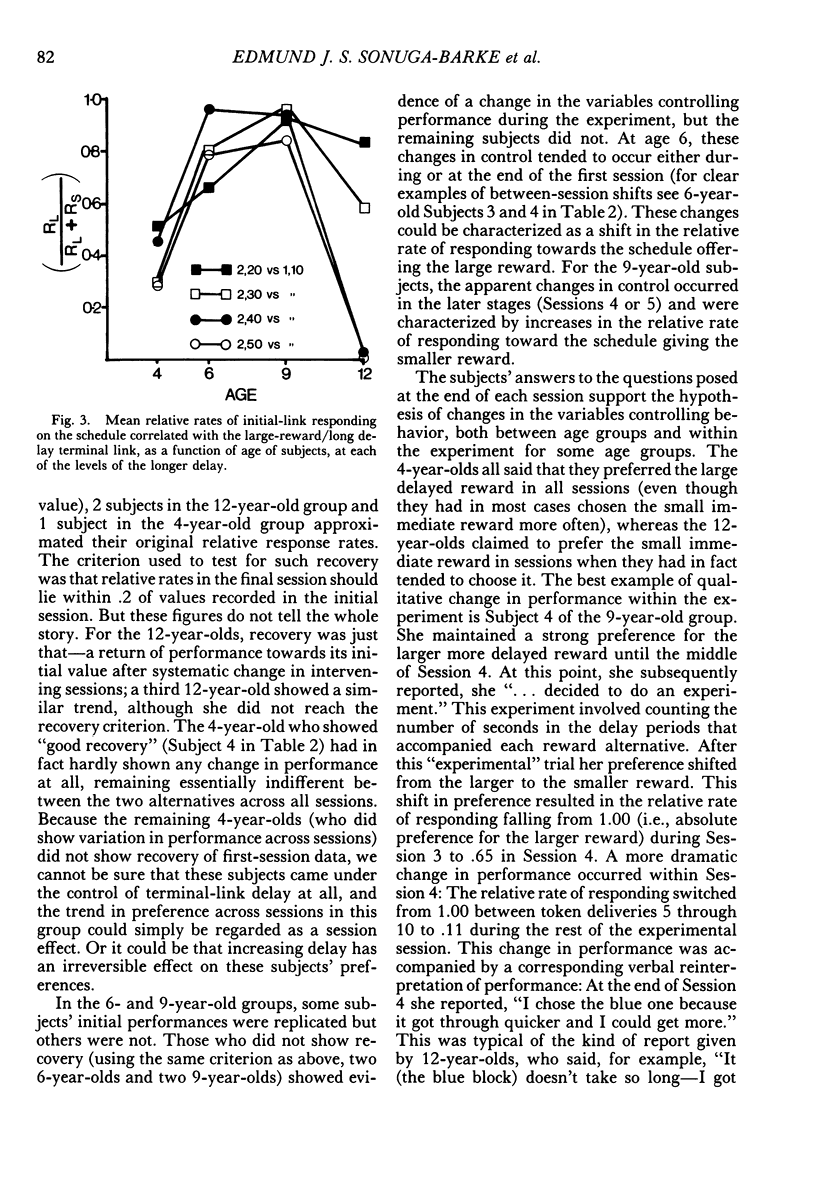
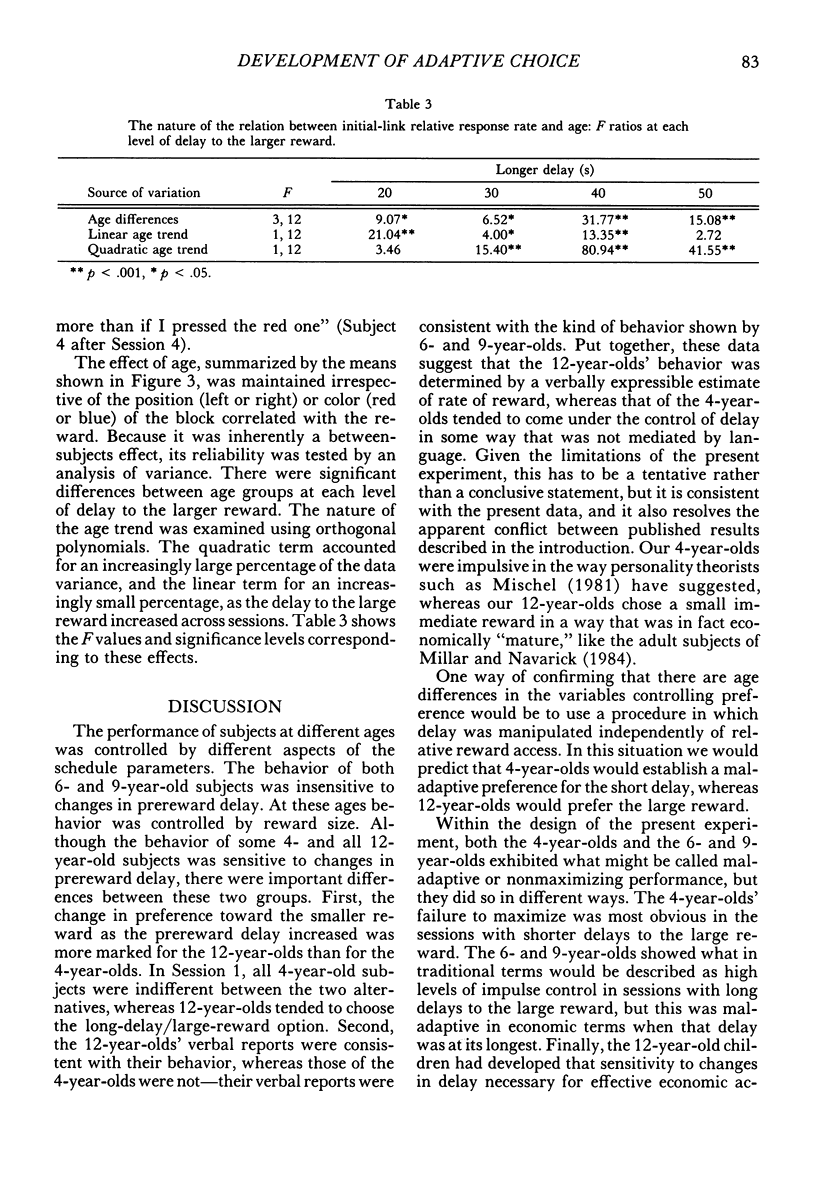
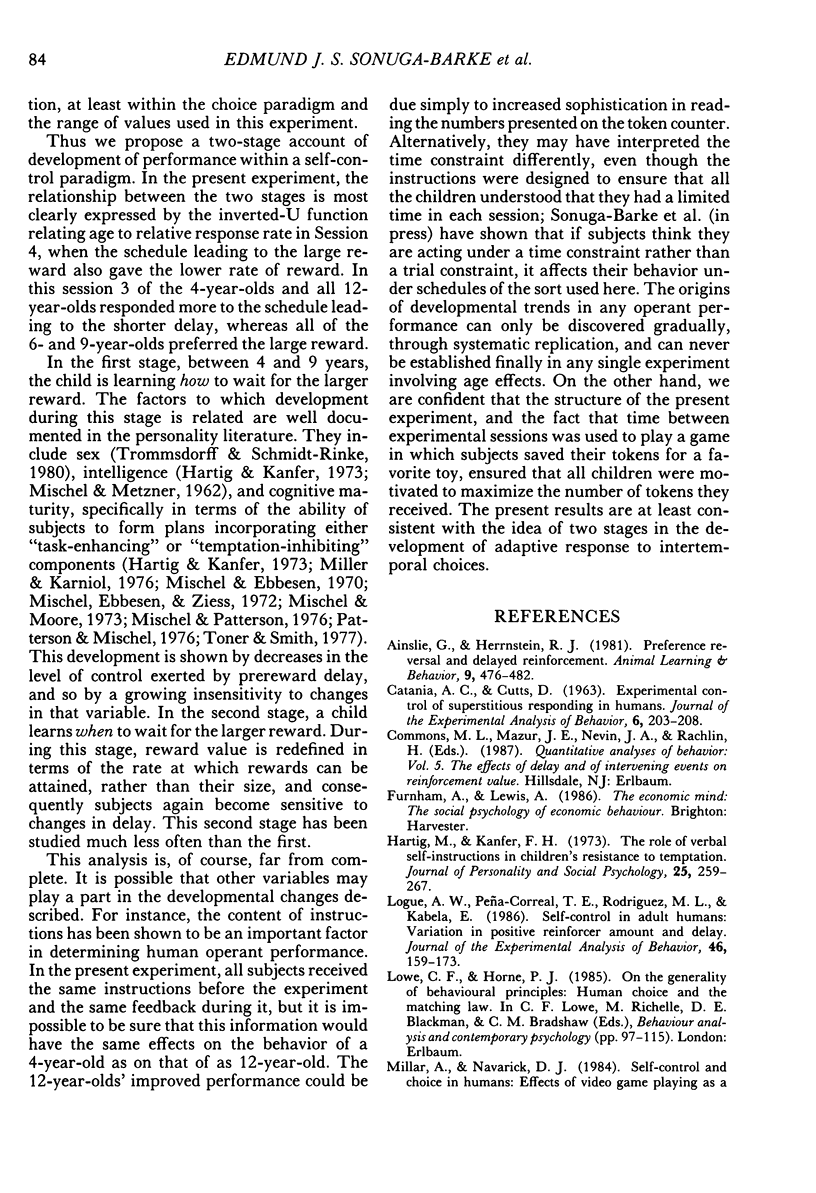
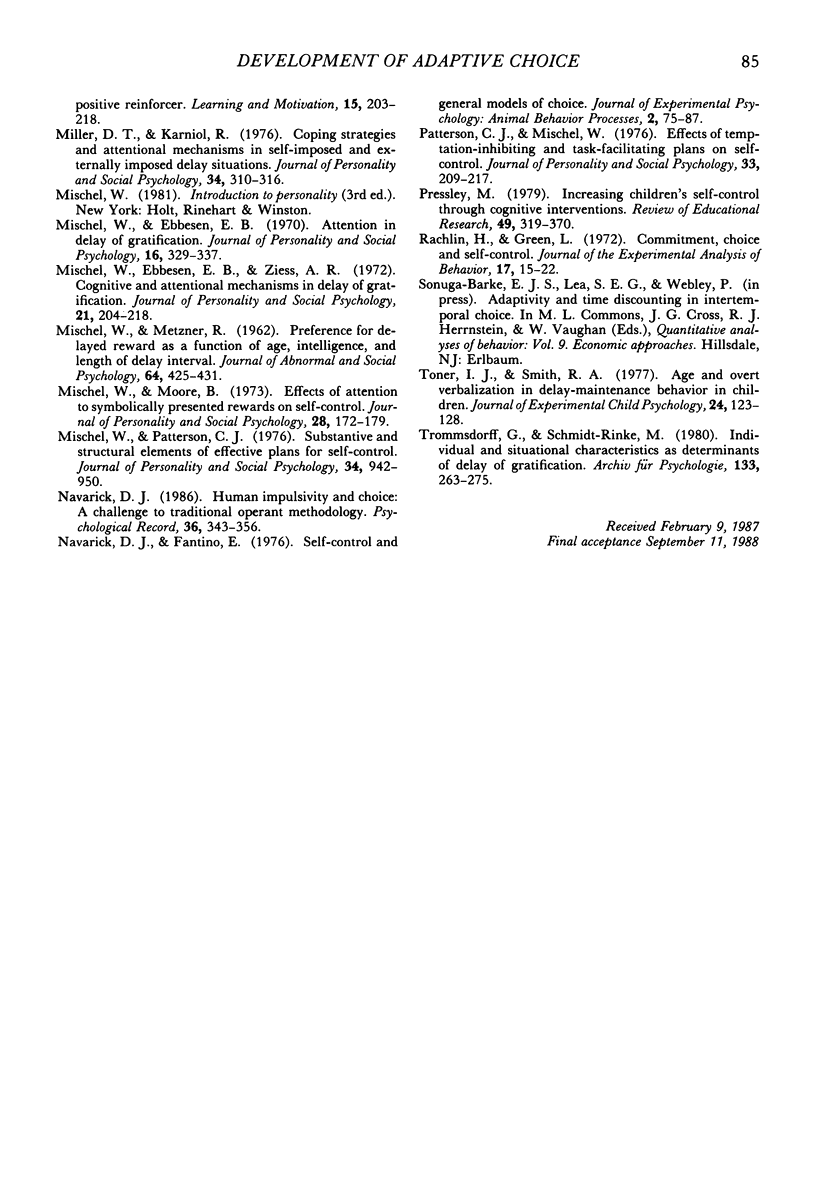
Selected References
These references are in PubMed. This may not be the complete list of references from this article.
- CATANIA A. C., CUTTS D. Experimental control of superstitious responding inhumans. J Exp Anal Behav. 1963 Apr;6:203–208. doi: 10.1901/jeab.1963.6-203. [DOI] [PMC free article] [PubMed] [Google Scholar]
- Hartig M., Kanfer F. H. The role of verbal self-instructions in children's resistance to temptation. J Pers Soc Psychol. 1973 Feb;25(2):259–267. doi: 10.1037/h0033938. [DOI] [PubMed] [Google Scholar]
- Logue A. W., Peña-Correal T. E., Rodriguez M. L., Kabela E. Self-control in adult humans: variation in positive reinforcer amount and delay. J Exp Anal Behav. 1986 Sep;46(2):159–173. doi: 10.1901/jeab.1986.46-159. [DOI] [PMC free article] [PubMed] [Google Scholar]
- MISCHEL W., METZNER R. Preference for delayed reward as a function of age, intelligence, and length of delay interval. J Abnorm Soc Psychol. 1962 Jun;64:425–431. doi: 10.1037/h0045046. [DOI] [PubMed] [Google Scholar]
- Mischel W., Ebbesen E. B., Zeiss A. R. Cognitive and attentional mechanisms in delay of gratification. J Pers Soc Psychol. 1972 Feb;21(2):204–218. doi: 10.1037/h0032198. [DOI] [PubMed] [Google Scholar]
- Mischel W., Moore B. Effects of attention to symbolically presented rewards on self-control. J Pers Soc Psychol. 1973 Nov;28(2):172–179. doi: 10.1037/h0035716. [DOI] [PubMed] [Google Scholar]
- Rachlin H., Green L. Commitment, choice and self-control. J Exp Anal Behav. 1972 Jan;17(1):15–22. doi: 10.1901/jeab.1972.17-15. [DOI] [PMC free article] [PubMed] [Google Scholar]
- Trommsdorff G., Schmidt-Rinke M. Individual and situational characteristics as determinants of delay of gratification. Arch Psychol (Frankf) 1980;133(4):263–275. [PubMed] [Google Scholar]


